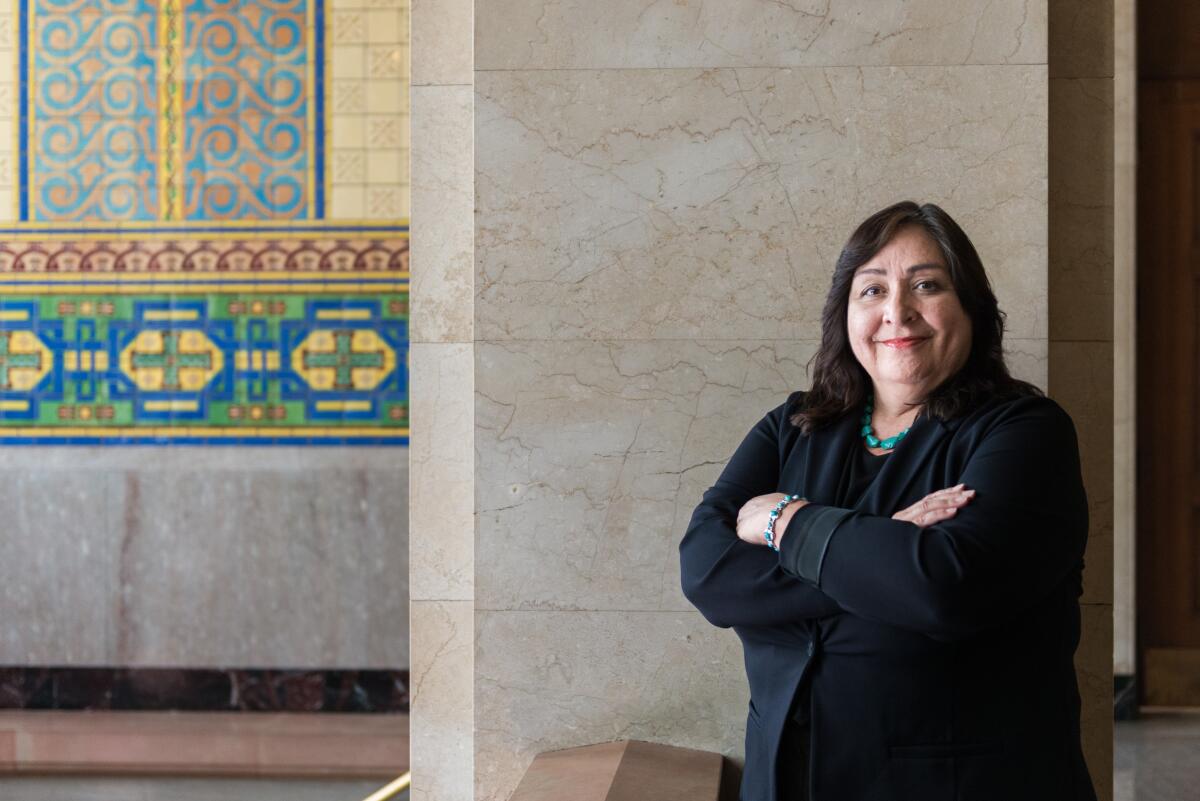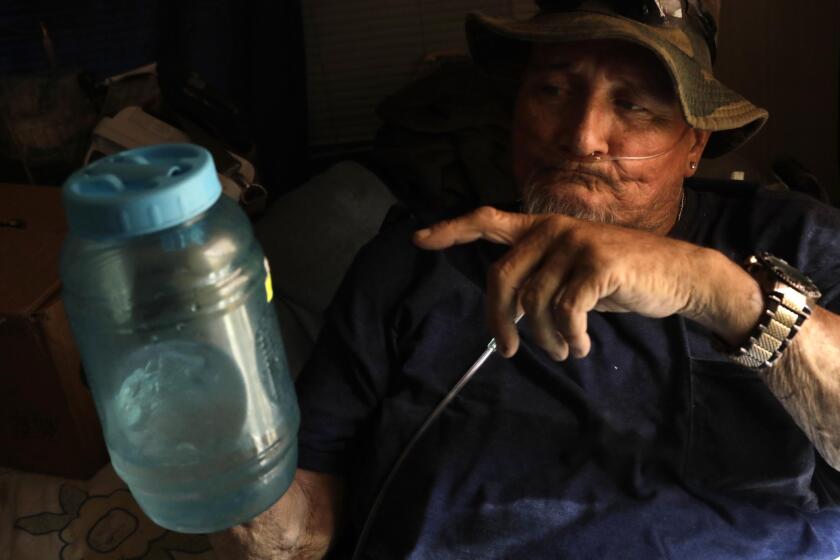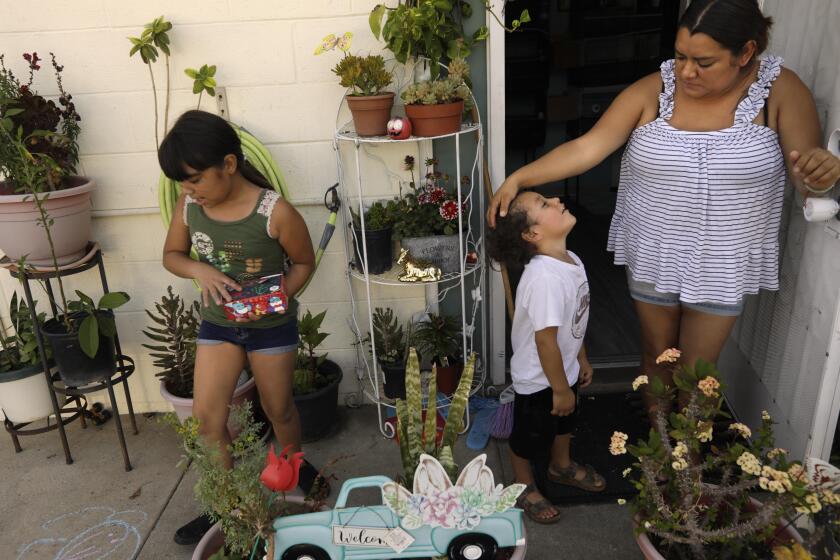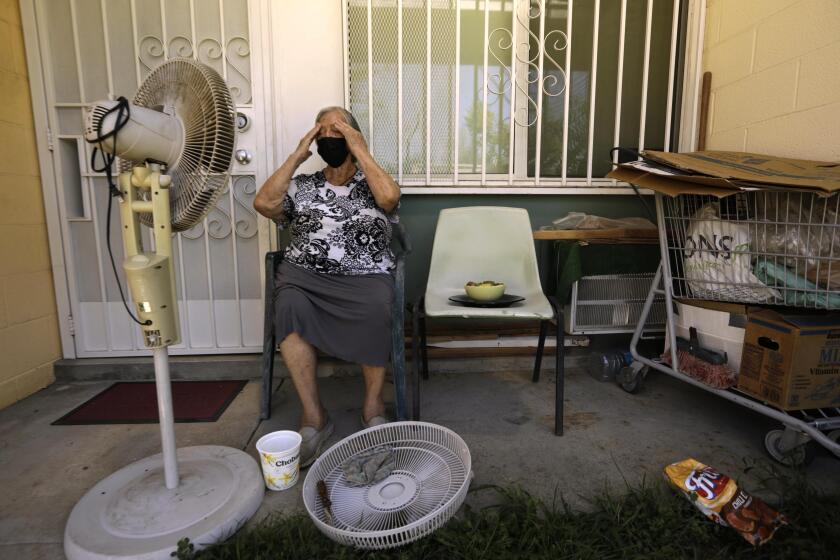Los Angeles to launch ‘extreme heat campaign’ Friday, says city’s first heat officer

As a child growing up in San Jose, Marta Segura heard horrific stories from her parents about women fainting on the factory lines and men overheating in the farm fields. They didn’t know those jobs exposed them to life-threatening conditions.
Then, it hit home.
“My dad, himself, got really sick one time and almost died,” said Segura, 58, the daughter of a bracero and a cannery worker. “That resonated with me as a kid.”
Segura, who serves as director of Los Angeles’ Climate Emergency Mobilization Office in the Department of Public Works, was given a second title this month: chief heat officer, the city’s first. She joins a number of heat officers around the world as cities from Athens, Greece, to Santiago, Chile, begin to coordinate a better response to extreme heat and develop sustainable cooling strategies. Phoenix and Miami are the only other U.S. cities with heat officers.
Read all of our coverage about how California is neglecting the climate threat posed by extreme heat.
As Los Angeles continues to experience more frequent heat waves, Segura will work across city departments to help create an early-warning system for heat waves and develop long-term strategies to reduce heat exposure, such as planting trees and updating building codes. Her office will also launch a social media campaign in July in English and Spanish.
Very high temperatures can cause cramps, heat stroke, and heat exhaustion. Extreme heat contributed to the deaths of around 12,000 people in the U.S. each year from 2010 to 2020, according to a study by the University of Washington. Those figures are likely to rise. A Times investigation last year found that California greatly undercounts the number of residents who die in heat waves.
Low-income, majority-minority neighborhoods experience significantly more heat than wealthier, whiter neighborhoods, according to researchers from the University of California, San Diego’s School of Global Policy and Strategy. The research shows that surface temperatures in communities with higher rates of poverty can be up to 7 degrees Fahrenheit warmer, compared with the richest neighborhoods, during summer.
“Neighborhoods in South Los Angeles send an additional 20 to 30 people to the emergency room on heat days compared to 2 additional people from wealthier neighborhoods,” said Dr. David Eisenman, director of the Center for Public Health and Disasters at UCLA. Eisenman will work with Segura to identify climate-vulnerable communities.
Segura, 58, takes her new job as state lawmakers consider expanding heat warnings. Assembly Bill 2076 would establish California’s first chief heat officer position and create a statewide extreme-heat and community resilience program. Assembly Bill 2238 would create the nation’s first warning system for heat waves, just as existing systems warn of other natural disasters, such as wildfires, tornadoes, and hurricanes.
KHN reporter Heidi de Marco met with Segura in her City Hall office to discuss her new role and how she plans to tackle the city’s climate risk. The interview has been edited for length and clarity.
Q: Why was this position created?
We’ve noticed a fivefold increase in extreme heat events and heat waves. There are more heat-related illnesses and more hospitalizations and deaths.
There are two goals. The first is changes to the system — the services and the infrastructure of the city. The other is education and awareness — that people know that extreme heat is more serious so they can take steps to protect themselves.
What are heat-related illnesses and how are they treated? Are they preventable or inevitable? We talked to health experts for the answers.
We’re tackling education with an extreme-heat campaign that will launch July 1. In terms of changing the system and services, the city is painting the roofs and roads with white, cool[ing] paint, planting more trees for maximum shade in vulnerable communities.
Q: You will be working to reduce heat-related hospitalizations and deaths, as well as working with different city agencies to implement a heat action plan. How will that work?
We’re already discussing updating our building codes for decarbonization and climate adaptation.
The other approach is through public works. For example, installing more shade structures, more kiosks, especially for metro and bus transportation furniture. They’re also installing more hydration stations.
So when you add that to our public facilities — parks, libraries, youth centers, which are all accessible during the day — you have a lot of opportunities to tell people where to go in the event of a heat storm or heat wave.
Q: How do you plan to address inequality?
It keeps me up at night. Addressing the most vulnerable community isn’t out of charity. And it isn’t because of moral reasons. It’s because if we don’t help the most vulnerable communities of Los Angeles, which are over 50% of the population, we’re not going to get to our climate solutions.
Paved surfaces, tree cover, and home construction quality can make the difference between heat waves being an inconvenience or a threat to your life.
Landlords are less likely to invest in heat pumps or other air conditioning systems because that would only raise the rent, and the rent would displace individuals. So we need a policy in the city of L.A. that prevents displacement and helps in some ways to subsidize those low-income housing units or find financing structures that allow landlords to be able to invest and keep our families healthy and safe.
Q: Is there a particular challenge in messaging to immigrant communities?
I think what I learned in my family is we tend to have the radio on as we go about our work. So it’s going to be important to use radio. It’s also going to be important to use text messaging services, like WhatsApp.
We want to make sure to get this information out to employers, so we probably need to come up with culturally relevant communications. It’s an evolving campaign.
Q: What kind of budget are you working with?
We will be allocating approximately 30% of our budget to heat-risk prevention work, and although our budget is not large, our impact on other partner departments, such as public works and the emergency management department, is significant.
We can’t look at my budget in a silo since the council has directed us to work collaboratively to combine the respective parts of our budgets for heat-risk prevention. However, I can say that my office will be doubling in size, from four to eight [employees], and this will give us the leverage and resources we need to make the kind of impact the city of L.A. seeks to make in the long run.
Q: How do you plan to address the homeless community?
What we actually would like to have are more pop-up units, where we have canopies and hydration.
So that’s a conversation I’m having with our deputy mayor of homelessness and housing so that we can coordinate together. And that’s a good example of something that my office can’t do alone because I need their expertise and their allocated resources to ensure that we’re providing the best available comprehensive resources for the city.
Q: You are the first Latina to hold such a position in the United States. How does that feel?
It’s significant because [Latinos] have been suffering disproportionately from climate hazards for a very long time, and we haven’t had positions like this in the past. If they see someone from their community, or that looks like they’re from their community, that speaks their language, that culturally relates to them, that has had similar experiences, I think it makes a big difference, right?
This story was produced by KHN (Kaiser Health News), one of the three major operating programs at KFF (Kaiser Family Foundation).









